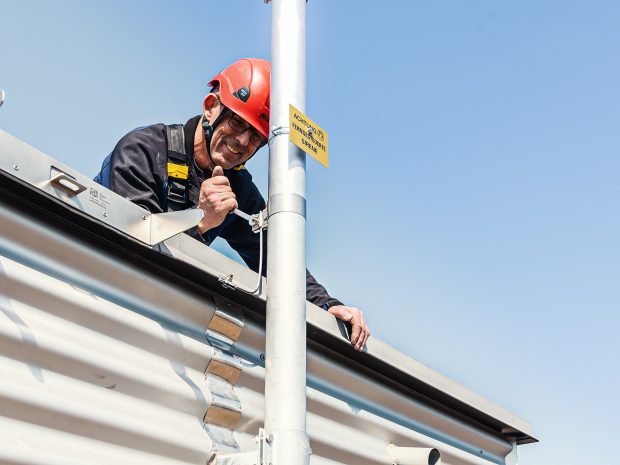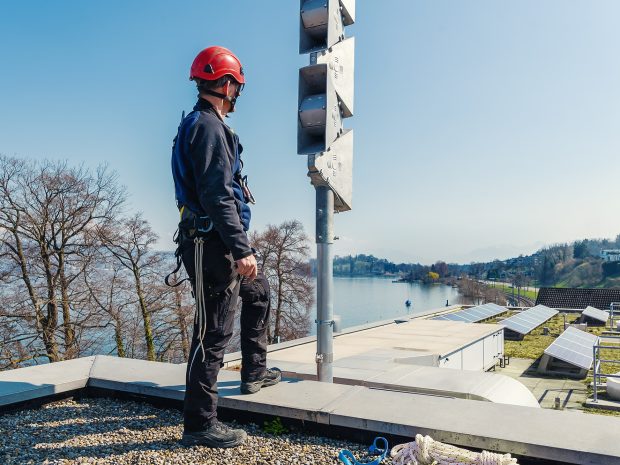Lightning protection = Fire protection = Safety
An important preventive investment that pays off in order to avoid damage caused by direct or indirect lightning effects.
With the beautiful and warm weather, the thunderstorm season also begins. It usually starts during the months of April and May. A fascinating weather phenomenon that can be both beautiful and very dangerous. The main reason for this is the position of the sun in combination with an unstable stratification of the air. Thunderstorms can basically occur all year round in Europe – but they are rather rare in late autumn and winter. During thunderstorms, there is often a lot of lightning activity – a true spectacle of nature. However, lightning can pose a great danger to people, animals and property (buildings, installations, equipment, etc.).
During lightning activity, large thermal, electrodynamic, electrochemical and acoustic forces are released, which in turn can cause damage due to the immense destructive force. In order to avoid damage caused by direct or indirect lightning effects and to minimise risks, appropriate protective measures are required, for example:
- Professional project planning, installation and inspection of external and internal lightning protection systems (LPS), as well as the use of appropriate lightning and surge protection components (SPD).
- Separate protective earthing for endangered objects or installations
External lightning protection systems each consist of air-termination and down-conductor systems and an earthing system. They ensure that the lightning currents can be properly discharged into the earth. In combination with the internal lightning protection, including the correct lightning and surge protection components, the lightning protection system ensures that no potential differences occur and that the electrical installation and the connected devices are not damaged. Especially in the case of security and alarm systems, it is important that availability and functional safety are guaranteed at all times and that no malfunctions occur due to direct or indirect lightning effects.
Conclusion: Lightning protection=Fire protection=Safety


